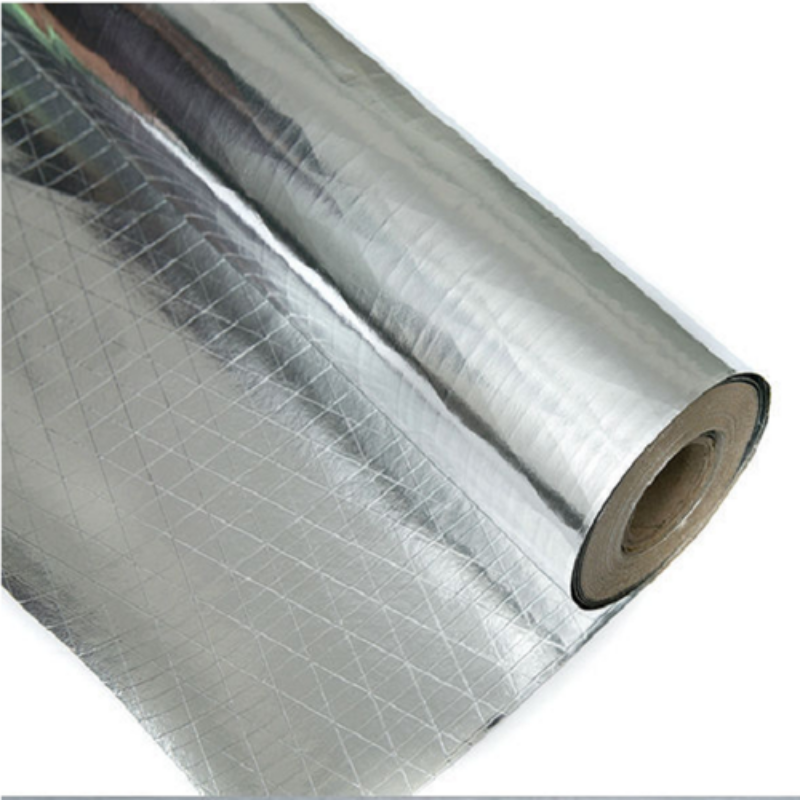
Aluminum Foil For Industrial Applications
Aluminum foil for industrial applications
The high resistance and the relatively low cost make aluminum foil suitable for industrial applications. By alloying aluminum with other metals such as magnesium, manganese, copper, nickel, silicon, or zinc, a wide range of aluminum alloys and foils with different properties can be produced. Whether for packaging or technical applications such as the vapor barrier in house construction or the insulation in piping systems – aluminum foil offers countless possibilities and is indispensable in any industry branch.
Aluminum foil for insulation and vapor barrier in the construction industry
One of the most important fields of application of aluminum foil is insulation. It is used, for example, as a heat-insulating layer for the insulation of pipes and ducts. Aluminum foil laminated with scrim with highly effective heat insulation of pipes. In the construction industry, aluminum foil is also used as a top layer for insulating materials such as stone wool, foam insulation panels, and lamellar mats in buildings' insulation. As a vapor barrier, the film ensures that no water vapor penetrates the insulation material and prevents mold formation and moisture damage. In addition to the vapor barrier property, aluminum foils reflect approximately 96% of radiant heat and are therefore very well suitable for thermal insulation. They can also be easily deformed or coated with a protective varnish, which increases their scope of application.
Aluminum foils for insulation are available in both dense and perforated versions. The dense insulation is used particularly where a vapor barrier is required, e.g., on basement walls or saunas. Perforated aluminum foil has tiny holes that allow the air circulation, thus preventing condensation when there are large temperature differences. This is advantageous, especially in the insulation of roofing. Aluminum foils with larger holes are referred to as punched or perforated aluminum foil. Because of its easy handling, aluminum foil allows fast installation even in large buildings such as warehouses. The lamination of mineral wool with aluminum foil also reduces fiber formation by the mineral wool. As a result, the aluminum foil also improves health protection and safety during insulation installation.
Aluminum foil for insulation of cables
Due to its low weight and high conductivity, aluminum foil is ideal for power cables' insulation. This is particularly important for heavy-duty high voltage cables. It not only improves electromagnetic compatibility but can also be used to localize damage. Besides, aluminum provides a certain degree of protection against electrical shock caused by damaged cables. The aluminum foil's barrier property also protects fiber cables from moisture and reduces interference from electronic devices in communication cables.
Aluminum foil as the basis for aluminum tape
Aluminum adhesive tape is a thin aluminum foil, one side of which is coated with heat-resistant adhesive. Compared to adhesive tapes made of plastic, aluminum adhesive tape offers the advantage that it is highly thermally resistant. It is not rendered brittle either by heat or cold and is therefore much more durable than plastic adhesive tapes. Aluminum adhesive tape is used, especially in heating and ventilation systems. For example, the pipe insulation is wrapped with thin wires, which give it the necessary support. The wires are then fixed in place with aluminum adhesive tape. Joints and interfaces are also covered with aluminum tape to improve the insulation. Aluminum is also used in the construction industry, for example, to close the joints in a vapor barrier or prevent heat loss due to leaking insulation.
In electrical engineering, aluminum tape is used as a shield. For this purpose, housing parts or openings are glued with self-adhesive aluminum foil or aluminum adhesive tape.